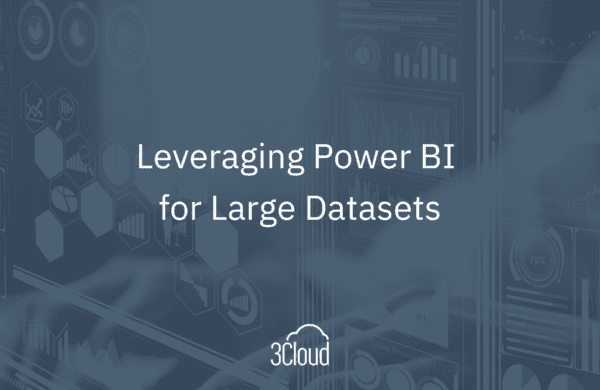Big data and artificial intelligence (AI) are superheroes that help businesses understand what customers think. It understands what they want (intent recognition). It suggests things they might like (recommendations). It even chats with them like a friend (chatbots). And now we have access to a new sidekick called natural language processing (NLP) that’s changing the game.
Cleaning and unifying messy and complex data sets for easy access and analysis can be time-consuming and frustrating. With customer data and AI, we can analyze mountains of information quickly. Unfortunately, much of it isn’t in neat tables or charts; it’s logged as comments or answers from what people said in surveys, phone calls, chats, and social media. This is where NLP steps in. Through natural language understanding (NLU), It reads and “understands” all these words to give us usable insights.
NLP has different tricks up its sleeve. Using computational linguistics, it can identify when people are happy or sad about something (sentiment analysis). It also spots the main topics people talk about (topic modeling). So why does this matter? It helps businesses make better marketing and distribution plans, fix problems that don’t work for customers, and gain customer retention. It’s no wonder companies like Microsoft are investing in AI.
In this blog, we’ll take a deep dive into next-level NLP. We’ll discover how GPT-3 helps businesses learn from and adapt to what customers say in surveys, calls, social media, reviews, and more. We’ll also cover sentiment analysis, topic modeling, intent detection, recommendations, and chatbots.
Understanding Customer Analytics
Businesses collect and look at customer data to learn more about them. This is called customer analytics. These insights help businesses understand what customers like or don’t like, what makes customers want to keep buying from them or stop buying, and other trackable actions customers take.
The insights from analytics let businesses spot opportunities to make customers happier, fix problems that bother customers, and get more customers to stick around for the long run. Customer analytics is a powerful business tool.
When gathering customer data, much of it comes from unstructured text, like written words, and not structured tables or charts. Some examples are survey answers, notes from customer service calls, chat logs, emails, social media posts, reviews, and feedback forms. All this textual data gives qualitative insights. It reveals deep emotions, motivations, and what customers might want to purchase sometime soon.
Traditional business intelligence relies more on structured data like purchase history, demographic information, and how much someone uses a service. Structured data shows what customers are doing. But text data explains why they are doing it.
Making sense of gigantic amounts of text data using only human effort is very daunting. Luckily, machine learning and deep learning models help human data analysts. They can unlock hidden insights and meanings in a fraction of the time it takes humans to do so.
Leveraging NLP for Customer Sentiment Analysis
Sentiment analysis uses NLP to identify opinions, emotions, and attitudes in text data. It gives valuable feedback on how customers perceive a brand, product, or service.
NLP techniques like text classification, entity recognition, and dependency parsing allow computers to understand human language. They can find expressions of positive or negative feelings. Aspect-based sentiment analysis dives deeper. It extracts sentiment about specific product features and topics.
For example, an NLP mode can analyze customer reviews of a smartphone. The data can determine that battery life is mentioned in positive ways, but camera quality gets more negative feedback. These detailed insights let businesses prioritize what products need improvement.
Sentiment analysis of customer service call transcripts and tickets can uncover pain points users are experiencing. Checking social media sentiment shows what a wider audience thinks of a brand. In both cases, businesses can track how sentiment changes over time. They can match it to business results.
Modeling for Customer Feedback and Insights
Topic modeling is an NLP method to identify the main themes and topics that keep coming up in unstructured text. It uses word relationships to group documents by topic.
For customer analytics, topic modeling gives a big-picture view of what customers are interested in, have issues with, and think about a company. By extracting hidden topical patterns, businesses can connect customer feedback to outcomes and guide their strategy.
For example, an e-commerce company can run topic modeling on product reviews. This research discovers which product benefits (quality, effectiveness, ease of use) or drawbacks (pricing, shipping, customer service) resonate most with buyers. These insights refine product design and marketing.
Social media monitoring with topic modeling uncovers trending issues and viral topics. This information gives businesses more opportunities to engage both new and old customers. Modeling survey responses reveal areas to improve across the customer experience.
Uncovering Customer Intent with NLP
Understanding what customers want is crucial to delivering positive experiences. Incorporating word sense disambiguation, NLP techniques help pinpoint motives and goals from text data.
Intent analysis of customer service tickets or call center notes uses text classification. This process categorizes questions by their intent, like needing account help, product information, or complaint management. Conversations with chatbots work better when NLP can detect what the customer wants.
Marketers also use intent analysis in chats and emails. This way, they can spot prospects who are ready to buy. They can develop custom intent models using examples of past conversations in an industry or for specific uses.
Using NLP to recognize intent, customers get quick answers instead of frustrating back-and-forth dialogues. Detecting customer intent at a large scale provides contextual shopping experiences and can be matched to each customer’s wants.
Entity Recognition: Unlocking Hidden Insights
Entity recognition identifies “entities” – people, places, organizations, products, etc. – within text. It helps get meaning from customer data.
For example, a customer tweet like, “I tried to use App XYZ to pay my bills, but it kept crashing!” can be analyzed to pull out:
- Entities: App XYZ, bills
- Sentiment: Negative
- Topic: App issues
Linking entities to topics and sentiment gives a multi-angle view of text data.
Entity recognition enables use cases like checking which products get talked about most in reviews, tracking brands mentioned in social media, and connecting customer service problems to specific services. These detailed insights guide targeted product and marketing plans.
Breaking Language Barriers with NLP Translation
NLP machine translation lets businesses engage audiences speaking different languages while keeping the correct meaning. Neural translation models analyze sentence patterns and significance to translate text accurately.
So now it’s easy to use customer content in local languages without losing the brand voice. Support teams can use chatbots to communicate with global customers in their native languages. This process makes it easier to translate marketing and advertising for people worldwide.
For international organizations, NLP translation allows centralized analysis of critical customer data from anywhere. Surveys, social media, and call transcripts stored in different languages are combined after translation to give a unified customer view. As global reach grows, NLP translation bridges language gaps to deliver personalized, localized experiences on a large scale.
Personalization and Recommendations with NLP
Today’s customers expect experiences designed just for them. NLP techniques enable personalized product recommendations, marketing messages, and customer service. NLP analyzes customer history, demographics, location, behavior, and likes/dislikes to build detailed profiles. Text message generation models then output customized content matching each audience group.
For example, an online retailer can use NLP to generate product ideas personalized for each shopper. The recommendations are from the preferred brand but fit individual interests and provide each customer with a unique shopping experience.
Responsible data and AI use is crucial for personalization. Strict data rules and privacy policies help customers trust a company. Recommendations must also be appropriate and helpful to avoid obscure or irrelevant suggestions posted in a public forum.
NLP-Driven Customer Segmentation
Dividing customers into distinct segments lets businesses customize interactions to maximize satisfaction. This process involves finding common traits from stored customer data.
Using computer science, NLP can efficiently analyze text data from customer communications, website activity, surveys, and more to create data-driven profiles of customers. Advanced techniques like graph learning segmentation use relationship patterns in NLP results to cluster customers automatically.
Micro-segmentation powered by NLP provides a detailed understanding of different motivations across customer groups. Businesses can fine-tune marketing, pricing, products, and experiences for each group they wish to target.
The Rise of AI Chatbots and Virtual Assistants
Over 50% of medium to large companies currently use chatbot solutions, up from less than 2% in 2016. This news makes great business sense because chatbots improve satisfaction while reducing costs and effort thanks to NLP advancements.
Smart chatbots use NLP to grasp customer questions and respond with helpful info or actions. With customizable language models like GPT-3, chatbots handle a wide range of customer service needs.
Use cases like answering FAQs, processing orders, and account help are being managed by AI chatbots. Natural conversations create good experiences without frustrating customers. When a request is too advanced or confusing for AI, the chat gets routed to a human agent.
Ethical Considerations in NLP-Powered Customer Analytics
While NLP opens massive potential, businesses must tackle ethical AI challenges around bias, being transparent, and protecting data privacy. Since NLP models learn from real-world data, there are risks of repeating societal biases if that data reflects unfair prejudices. Ongoing human review helps catch skewed model results and minimize bias.
Being transparent about how data gets used builds public trust. Explaining how an NLP model works will reassure users it’s acting safely. Notification and permission processes protect people’s rights over their sensitive data.
Responsible AI practices that give customers visibility and control over their data will ultimately benefit businesses. They build credibility as they build partnerships.
The Future of AI-Driven Customer Insights
As NLP and language AI improve, businesses will gain insights from multimedia unstructured data. It can use speech recognition, emotion detection, summarizing, and answering key industry questions.
The widespread acceptance of NLP through low-code platforms allows non-technical teams to leverage text analytics. With firm governance, NLP will transform the understanding of customers. It will optimize engagement, loyalty, and lifetime value.
However, as machine learning methods continue to advance, responsible AI practices will become a priority. The ethical use of customer data while eliminating biases and transparency are crucial. With care, NLP can usher in next-gen customer analytics. Businesses will have unmatched mastery of the customer.
Adopting AI with transparency, accountability, privacy, and human oversight is vital. This practice creates customer trust and mutually beneficial data-powered partnerships. Customers will feel valued and understood. It’s a win-win for companies and consumers! The power of AI is here – let’s explore what it can do for you.




